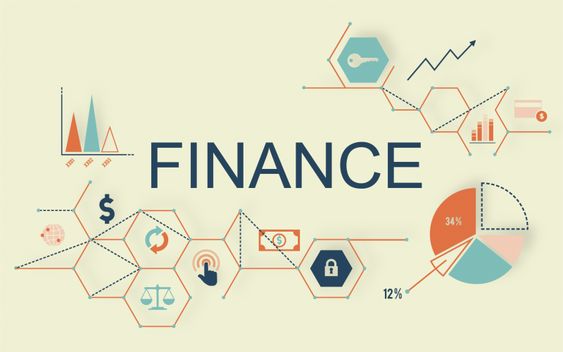Introduction of Regional Finance:

Regional finance typically refers to financial activities and services that are specific to a particular geographical region or area. It encompasses financial institutions, regulations, and practices that are focused on serving the needs of a specific region or community. Regional finance can involve activities such as banking, lending, investment, and economic development that are tailored to the unique characteristics and demands of a particular locality. It often involves understanding and addressing the economic, social, and cultural aspects of a specific region to provide financial solutions that are relevant and effective for the people and businesses within that area.
Importance of Regional Finance:
Regional finance is important for a number of reasons. First, regional financial institutions can provide more personalized service to their customers. They are often more familiar with the needs of the local community and can offer more flexible terms and conditions on their loans and other financial products. Second, regional financial institutions are often more supportive of small businesses and entrepreneurs. #Regional Finance
They may be more willing to lend to small businesses and entrepreneurs because they better understand the local economy and the risks involved. Third, regional financial institutions can help to boost the local economy. They invest in local businesses and create jobs. They also support local charities and community organizations. Finally, regional financial institutions play an important role in financial inclusion. They provide financial services to people who may not be able to qualify for services from larger national banks. For example, regional financial institutions may offer more affordable loans and lower fees to lower-income people. #Regional Finance
Here are some specific examples of how regional finance can benefit the local community:
Regional finance plays a crucial role in fostering local economic growth and financial well-being. Whether providing loans to small business owners, helping young couples purchase their first homes, or offering financial literacy classes to the community, regional financial institutions contribute significantly to the prosperity of their areas. The advantages of utilizing these institutions include personalized service, competitive rates, flexible terms, and strong support for small businesses. Moreover, their active involvement in the community enhances their impact, as they sponsor events and contribute to local charities, reinforcing their commitment to the region’s overall development.
The benefits of using regional institutions:

Here are some specific instances demonstrating the benefits of regional financial institutions for customers:
- A regional bank may grant a loan to a small business owner, enabling the creation of new jobs and a positive impact on the local economy.
- A regional credit union could extend a loan to a young couple aiming to purchase their first home, helping them build wealth and achieve their financial aspirations.
- Regional financial institutions often offer financial literacy classes to the community, empowering individuals to make informed financial decisions and enhance their financial well-being.
In summary, regional financial institutions offer a range of benefits to customers, including personalized service, competitive rates, and fees, flexible terms and conditions, support for small businesses and entrepreneurs, and active community involvement. If you are contemplating using a regional financial institution, it is essential to conduct thorough research and compare different options to select the one that aligns best with your needs. Additionally, consider your individual financial goals and risk tolerance when making your decision. #Regional Finance
Types of regional financial institutions:
Various types of regional financial institutions exist, including banks that serve specific geographic areas, offering a wide range of financial services. Credit unions, owned by their members, provide various financial products. Thrift savings institutions specialize in housing loans but also offer other services. Community development financial institutions focus on underserved communities, providing loans, investments, and financial education.
Farm credit institutions offer loans to farmers and ranchers. Specialized institutions like mutual savings banks, industrial loan companies, and savings and loan associations are also available. These entities play a crucial role in the economy by supporting local businesses and individuals, contributing to business growth, job creation, and the achievement of personal financial goals.
Here are some examples of regional financial institutions in the United States:
Banks:
New York Community Bank, Capital One, Huntington Bancshares, PNC Financial Services and US Bancorp
Credit unions:
Navy Federal Credit Union, State Employees’ Credit Union, Pentagon Federal Credit Union, SchoolsFirst Federal Credit Union and Golden 1 Credit Union
Thrift savings institutions:
Washington Federal, City Savings Bank, First Savings Bank and United Federal Credit Union
Community development financial institutions:
Accion, Community Reinvestment Fund, Self-Help Federal Credit Union and Opportunity Fund
Farm credit institutions:
Farm Credit System and AgCredit
When choosing a financial institution, it’s crucial to consider your specific needs and objectives. Whether you’re seeking support for small businesses, competitive rates, or flexible terms, a regional financial institution may be an excellent choice based on your individual requirements. #Regional Finance
How to choose the right regional financial institution:

When choosing a regional financial institution, there are a number of factors to consider, including:
Determine your required financial products and services, such as accounts, loans, investments, and financial planning. Compare offerings from various regional financial institutions based on your needs. Evaluate fees and interest rates, ensuring a thorough understanding of all applicable terms. Assess convenience by considering branch locations and online/mobile banking services. Research customer reviews to gauge the quality of customer service provided by different regional financial institutions.
Here are some additional tips for choosing the right regional financial institution for your needs:
Seek recommendations from friends, family, and colleagues regarding regional financial institutions. Conduct thorough online research by visiting their websites, reading reviews, and comparing fees and interest rates. Consult with a financial advisor to assess your needs and make an informed decision. Schedule appointments with representatives from your narrowed-down choices to ask questions and gather more information about their products and services. Careful consideration in choosing the right regional financial institution is crucial, and investing time in research ensures you find one that aligns with your needs and provides optimal value. #Regional Finance
Conclusion:
The future of regional finance is marked by key trends, including the growing use of technology for efficiency and new services, industry consolidation to compete with larger banks, and regulatory challenges due to new financial regulations like Dodd-Frank. Regional financial institutions can prepare for the future by investing in technology, merging with others, focusing on community needs, developing niche expertise, and partnering with fintech companies. #Regional Finance
These institutions play a vital role in supporting local businesses and job creation by providing loans, financial advice, and investing in communities. They can further assist businesses by offering specialized financial products, partnering with local organizations, hosting workshops, and supporting entrepreneurship. Regional financial institutions encompass various types, including banks, credit unions, thrift savings institutions (TSIs), community development financial institutions (CDFIs), and farm credit institutions, serving specific geographic areas and offering diverse financial services. #Regional Finance




